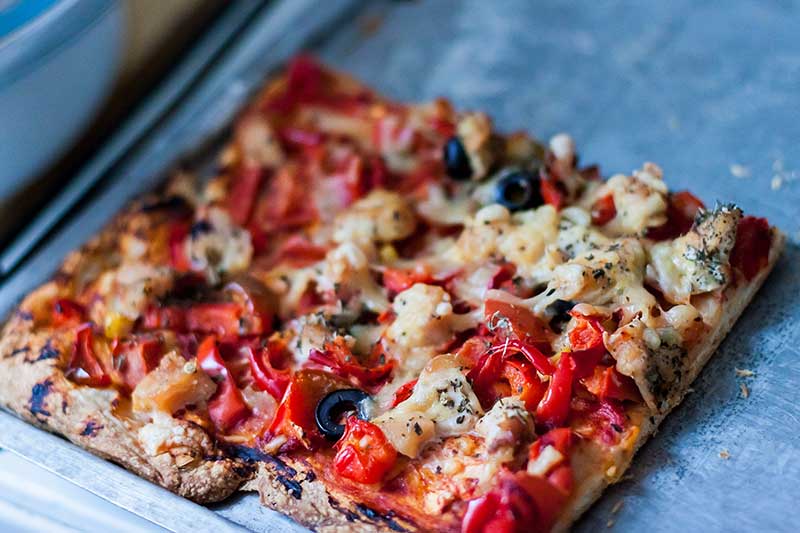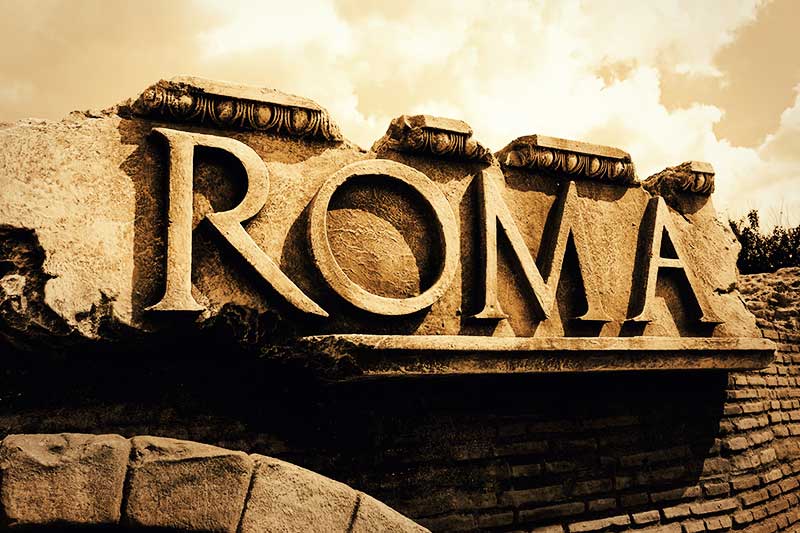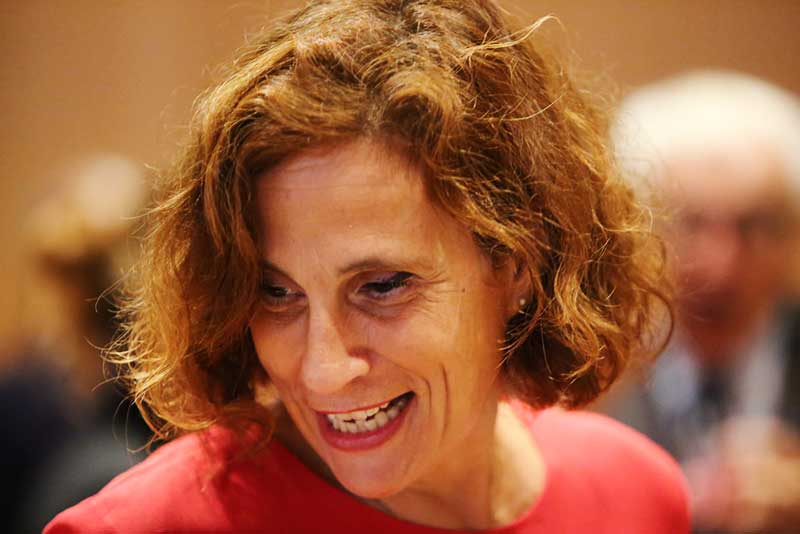Everyone knows Italy’s national sport is soccer. After that come cycling, skiing and Formula One, where the country always produced great champions.
Our relationship with basketball is definitely more nuanced, though: as kids, we play it during P.E; as teens, it becomes one of the many symbols of American culture, something that still fascinates and enchants Italian youth.
Yet, the recent death of Kobe Bryant made a profound impression on the country, more than one would expect, perhaps.There are, of course, the tragic circumstances of his passing. There’s the fact he was young and famous, a husband and a father. There’s the tragic knowledge of how the life of one of his own children, Gianna — such an Italian name, a short version of delicate “Giovanna” — was claimed in the accident as well, too soon, too young.
And then, there is the awareness of families — the Bryants, but also those of the other people who perished in the crash — being destroyed by sorrow. The sheer, matter-of-fact realization of life’s fragility and of the ineluctable nature of death: indeed, John Donne was right when writing never send to know for whom the bell tolls; it tolls for thee. Bryant’s teammate and friend LeBron James said it well during his heartfelt, moving speech at the Staples Centre last Friday: Kobe’s death forces us all to put our own life priorities in order.
Kobe Bryant’s death meant all this to Italy. And something more.
Because the bond between our country and the NBA star was deep and real and meaningful, even if not many may be aware of it. Here, Kobe had learned how to play. Here, he had discovered his love for the sport. Here, his dream had begun to turn into reality. And he never forgot it.
Kobe’s father, Joe “Jellybean” Bryant, had played in the NBA for quite sometimes when he eventually decided to spend the last years of his career in Europe. Italy happened to be the place fate chose for him so, in 1984, he and his family, including 6 years old Kobe, moved to Rieti, a pretty town about 50 miles from Rome, where Joe played for the local team, AMG Sebastiani. Here the Bryants spent three years: “we always kept two eyes on the ball and two eyes on him,” said Antonio Olivieri, Joe Bryant’s former teammate, about young Kobe. “He was a kid when he was here in Rieti. I remember Joe always taking him to the gym… he used to climb into the hoops while we were playing, “ Olivieri continued in a Reuters interview.
From there, the Bryants moved to Reggio Calabria, right in the country’s toe, where Kobe, who was 8, started training with the local youth team: “He moved like a panther, he would take control of the ball and play all positions,” his first coach, Rocco Romeo said to The Wall Street Journal.
The family then moved back up to Tuscany in Cireglio, a small village near Pistoia that Kobe called home for two years. It’s here that he received his first Holy Communion, an important moment for someone brought up a Catholic, and who made of his own Faith an essential feature of his life. In the days following his death, Alessia Pierattini, an old friend of Kobe’s from Cireglio, said she had made a photo album, years ago, with many pictures of that day, and that she even had the occasion to show it to Kobe, seven years ago: “One morning at 7, the doorbell rang and I saw Kobe,” she remembers. In the same interview, published by Reuters, Pierattini also mentions how friendly the NBA star had been, in that occasion, with all the people in the village who wanted to take photos with him. Then, she confided he had told her he would have loved for his daughters to live in Italy: “I want them to experience what I felt as a child, a reality that does not exist in America,” he had said to Pierattini. Words that leave little doubt about the place Italy had in Kobe’s heart.
But the place Kobe remembered with more fondness was, without a doubt, quaint and elegant Reggio Emilia, where he lived until 1991.
What an impression Reggio must have made on a young kid from Philadelphia: smaller, without a doubt, but so perfectly contained and filled with Old World beauty. The piazzas, the Basilica della Ghiara, the Teatro Municipale… the food! Yes, Reggio, its friendly people, gritty and welcoming just like all Emiliani are, soon became home and family to the Bryants and to Kobe in particular.
In Reggio Emilia, Kobe truly felt at home, as he declared in 2016 to BaskeTime Magazine: “I grew up here, I used to ride my bike here. There were all my friends, I have many memories, it’s special.”
Reggio is where he learned to speak fluent Italian and where he liked to return quite often. “When, at the end of his career, Kobe Bryant showed up here in Reggio Emilia, I think that has been the moment during which the entire citizenship of the town understood the genuine depths of the connection,” Reggio Emilia’s mayor Luca Vecchi declared to CNN.
Kobe always stressed how the time he spent as a player of Cantine Riunite’s (Reggio Emilia basketball squad) youth team was crucial for his formation as an athlete. Davide Giudici was his teammate in those years, and he also kept in touch with him later in life: “Kobe was very serious and very professional. Even when he was 10 or 11 , he had the ‘Mamba mentality’,” he said to CNN.
During the same interview, Giudici also recalled a particular moment he and Bryant shared in recent years, one that today has become even more significant: during his first season in the NBA, Kobe and his sisters visited Italy and organized a day out in Reggio Emilia with their mates from childhood: “It was an unforgettable moment altogether, like when we were children, having ice cream like normal people.” Indeed, Kobe highlighted in more than one occasion how much he missed the Italian way of life, “like going out with friends in the piazza to have a gelato.”
Truly, the time he spent in Italy, between the age of 6 and 13, made a long-lasting impression on him, made him the man he was and he showed it in a myriad of small ways.
Some little examples. He gave Italian names to his daughters, Gianna — as we said —Bianka Bella, Natalia Diamante and Capri. He was a great soccer fan and supported AC Milan like a true Italian tifoso: he even kept a team’s scarf in the Lakers’ locker room. Once he said, “ Cut my left arm and it bleeds black and red,” AC Milan’s colors, “ Cut my right arm, it bleeds purple and gold,” the Lakers’ ones. Aware of Bryant’s passion, AC Milan wore black armbands during their last Serie A match against Torino, and played a tribute video to Kobe and Gianna on the San Siro Stadium’s big screens before kickoff.
Not many Italians knew about Kobe Bryant’s love for their country. I didn’t know. But, in all honesty, we are happy to have found out. Proud that he felt one us, with his talent and imperfections; that he felt Italy would be a beautiful place for his children to live. In 2011, during an interview on Radio Deejay, one of our most popular radio stations, he had said Italy was always to be close to his heart. We’d like to say, today, he will always be close to Italy’s heart, too.
Tutti sanno che in Italia lo sport nazionale è il calcio. Poi il ciclismo, lo sci e la Formula Uno, sport a cui il Paese ha sempre dato grandi campioni.
Il nostro rapporto con il basket è sicuramente più sfumato: da ragazzi ci giochiamo durante l’ora di educazione fisica; da adolescenti diventa uno dei tanti simboli della cultura americana, cosa che ancora oggi affascina e incanta i giovani italiani.
Eppure, la recente scomparsa di Kobe Bryant ha lasciato un segno profondo nel Paese, forse più di quanto ci si aspetterebbe: ci sono, naturalmente, le tragiche circostanze della sua scomparsa. C’è il fatto che era giovane e famoso, che era un marito e un padre. C’è la tragica consapevolezza di come la vita di uno dei suoi figli, Gianna – un nome così italiano, una versione breve della delicata “Giovanna” – sia stata portata via dall’incidente, troppo presto, troppo giovane.
E poi, c’è la consapevolezza che le famiglie – i Bryant, ma anche quelle delle altre persone che sono scomparse nell’incidente – sono state distrutte dal dolore. La pura e semplice consapevolezza della fragilità della vita e dell’ineluttabile natura della morte: in effetti, John Donne aveva ragione quando scriveva non chiedere mai per chi suona la campana; suona per te. Il compagno di squadra e amico di Bryant, LeBron James, lo ha detto bene durante il suo commovente e sentito discorso allo Staples Centre venerdì scorso: la morte di Kobe ci costringe tutti a mettere ordine nelle nostre priorità di vita.
La morte di Kobe Bryant ha significato tutto questo per l’Italia. E qualcosa di più.
Perché il legame tra il nostro Paese e la star dell’NBA era profondo, reale e significativo, anche se non molti lo sapevano. Qui Kobe aveva imparato a giocare. Qui aveva scoperto il suo amore per questo sport. Qui il suo sogno aveva cominciato a diventare realtà. E lui non l’ha mai dimenticato.
Il padre di Kobe, Joe “Jellybean” Bryant, aveva giocato nell’NBA molte volte, quando alla fine decise di passare gli ultimi anni della sua carriera in Europa. L’Italia era il posto che il destino aveva scelto per lui e così, nel 1984, lui e la sua famiglia, tra cui Kobe, 6 anni, si trasferirono a Rieti, una bella cittadina a circa 50 miglia da Roma, dove Joe giocava per la squadra locale, l’AMG Sebastiani. Qui i Bryant hanno trascorso tre anni: “Abbiamo sempre tenuto due occhi sulla palla e due occhi su di lui”, ha detto Antonio Olivieri, ex compagno di squadra di Joe Bryant, a proposito del giovane Kobe. “Era un ragazzino quando era qui a Rieti. Ricordo che Joe lo portava sempre in palestra… si arrampicava nei cerchi mentre giocavamo”, ha continuato Olivieri in un’intervista alla Reuters.
Da lì i Bryant si sono trasferiti a Reggio Calabria, proprio nella punta dello Stivale, dove Kobe, che aveva 8 anni, ha iniziato ad allenarsi con la squadra giovanile del posto: “Si muoveva come una pantera, prendeva il controllo del pallone e giocava in tutte le posizioni”, ha detto il suo primo allenatore, Rocco Romeo, al The Wall Street Journal.
La famiglia poi si trasferì di nuovo in Toscana a Cireglio, un piccolo paese vicino a Pistoia che Kobe chiamò casa per due anni. È qui che lui ha ricevuto la sua prima Comunione, un momento importante nella vita di chi è cattolico, e che ha fatto della propria Fede un tratto essenziale della sua vita. Nei giorni successivi alla sua morte, Alessia Pierattini, una vecchia amica di Kobe di Cireglio, ha detto di aver fatto un album fotografico, anni fa, con molte foto di quel giorno, e di aver avuto l’occasione di mostrarlo a Kobe, sette anni fa: “Una mattina alle 7, il campanello suonò e vidi Kobe”, ha ricordato. Nella stessa intervista, pubblicata dalla Reuters, Pierattini ha accennato anche a quanto la star dell’NBA fosse stata amichevole, in quell’occasione, con tutte le persone del paese che volevano farsi fotografare con lui. Poi, confidò che lui le aveva detto che avrebbe voluto che le sue figlie vivessero in Italia: “Voglio che vivano quello che ho vissuto io da bambino, una realtà che non esiste in America”, aveva detto a Pierattini. Parole che lasciano pochi dubbi sul posto che l’Italia aveva nel cuore di Kobe.
Ma il luogo che Kobe ricordava con più affetto era, senza dubbio, la pittoresca ed elegante Reggio Emilia, dove ha vissuto fino al 1991.
Che impressione deve aver fatto Reggio a un ragazzino di Philadelphia: più piccolo, senza dubbio, ma così perfettamente completo e pieno di bellezze del Vecchio Mondo. Le piazze, la Basilica della Ghiara, il Teatro Municipale… il cibo! Sì, Reggio, la sua gente cordiale, grintosa e accogliente come sono tutti gli Emiliani, è diventata ben presto la casa e la famiglia dei Bryant e di Kobe in particolare.
A Reggio Emilia, Kobe si è sentito veramente a casa, come ha dichiarato nel 2016 a BaskeTime Magazine: “Sono cresciuto qui, qui giravo in bicicletta. C’erano tutti i miei amici, ho molti ricordi, è speciale”.
Reggio è il luogo dove ha imparato a parlare correntemente l’italiano e dove gli piaceva tornare spesso. “Quando, alla fine della sua carriera, Kobe Bryant si è presentato qui a Reggio Emilia, credo che quello sia stato il momento in cui tutta la cittadinanza reggiana ha capito la profondità del legame”, ha dichiarato alla CNN il sindaco di Reggio Emilia Luca Vecchi.
Kobe ha sempre sottolineato come il tempo trascorso come giocatore della squadra giovanile delle Cantine Riunite (squadra di pallacanestro di Reggio Emilia) sia stato fondamentale per la sua formazione di atleta. Davide Giudici è stato suo compagno di squadra in quegli anni, e con lui si è tenuto in contatto anche in seguito: “Kobe era molto serio e molto professionale. Anche a 10 o 11 anni aveva la mentalità del ‘Mamba'”, ha detto alla CNN.
Nella stessa intervista, Giudici ha anche ricordato un momento particolare che lui e Bryant hanno condiviso negli ultimi anni, e che oggi è diventato ancora più significativo: durante la sua prima stagione in NBA, Kobe e le sue sorelle hanno visitato l’Italia e organizzato una giornata a Reggio Emilia con i loro compagni d’infanzia: “È stato un momento indimenticabile, come quando eravamo bambini, lì a mangiare il gelato come persone normali”. In più di un’occasione, comunque, Kobe ha sottolineato quanto gli mancasse lo stile di vita italiano, “come uscire con gli amici in piazza a mangiare un gelato”.
Davvero, il tempo trascorso in Italia, tra i 6 e i 13 anni, gli ha lasciato una forte impressione, lo ha reso l’uomo che era e lui lo ha dimostrato in una miriade di modi.
Alcuni piccoli esempi. Ha dato nomi italiani alle sue figlie, Gianna – come si diceva -Bianka Bella, Natalia Diamante e Capri. Era un grande tifoso di calcio e sosteneva il Milan come un vero tifoso italiano: aveva persino una sciarpa della squadra nello spogliatoio dei Lakers. Una volta disse: “Tagliami il braccio sinistro e sanguinerà nero e rosso”, i colori del Milan, “Tagliami il braccio destro e sanguinerà viola e oro”, quelli dei Lakers. Conoscendo la passione di Bryant, il Milan ha indossato le fasce nere durante l’ultima partita di Serie A contro il Torino, e prima del calcio d’inizio ha mandato un video-tributo a Kobe e Gianna sui maxischermi dello stadio di San Siro.
Non molti italiani conoscevano l’amore di Kobe Bryant per il nostro Paese. Io non lo sapevo. Ma, in tutta onestà, siamo felici di averlo scoperto. Orgogliosi che si sentisse uno di noi, con il suo talento e le sue imperfezioni; che sentisse che l’Italia sarebbe stata un bel posto dove vivere per i suoi figli.
Nel 2011, durante un’intervista a Radio Deejay, una delle nostre radio più popolari, aveva detto che l’Italia sarebbe sempre stata vicina al suo cuore. Oggi vorremmo dire che anche lui sarà sempre vicino al cuore dell’Italia.































